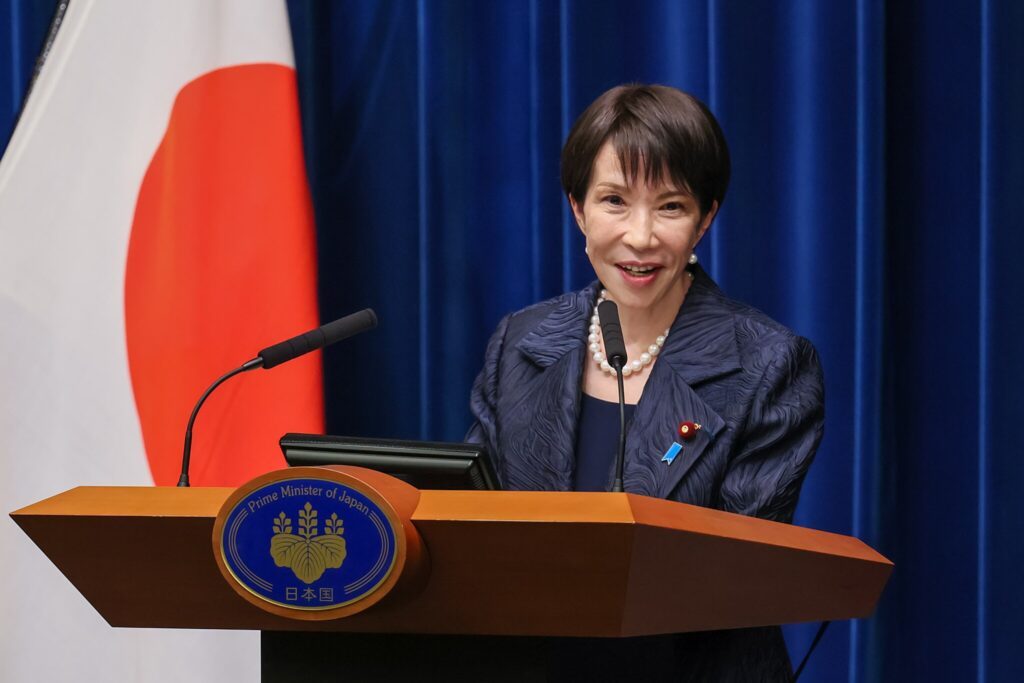Japan’s Falling Real Wages Threaten Prime Minister Takaichi’s Economic Revival Plan
Japan’s Falling Real Wages Threaten Prime Minister Takaichi’s Economic Revival Plan
By
David Goldfarb
Last updated:
November 10, 2025
First Published:
November 10, 2025

Photo: Good Authority
Just weeks into her tenure, Japan’s Prime Minister Sanae Takaichi is facing a major economic challenge that could undermine her promised revival of “Abenomics.” Despite rising nominal wages, Japan’s real wages have continued to fall, reflecting how inflation is outpacing income growth and squeezing the nation’s households.
According to Japan’s Ministry of Health, Labour and Welfare, real wages declined by 1.4% year-on-year in September, marking the ninth consecutive month of decline. On an annual basis, real wages have not risen since 2021, highlighting a sustained erosion of purchasing power among consumers. While nominal wages rose 1.9%, the gains have been overshadowed by persistent inflation that has now exceeded the Bank of Japan’s 2% target for 41 straight months, reaching 2.9% in September.
The Abenomics Legacy and Takaichi’s Fiscal Gamble
Takaichi, Japan’s first female prime minister, has pledged to reignite the economic framework of her late mentor, Shinzo Abe — known as “Abenomics.” The policy rests on three pillars: ultra-loose monetary policy, aggressive fiscal stimulus, and structural reform. However, reviving that approach has proven difficult in today’s inflationary environment.
According to government sources cited by Reuters and Nikkei, Takaichi is preparing a 13.9 trillion yen ($92.2 billion) stimulus package aimed at supporting households burdened by rising prices. The plan reportedly includes over 10 trillion yen in subsidies for energy costs and aid for small and medium-sized enterprises to boost wages.
While such spending could provide temporary relief, it also risks worsening inflationary pressures. Analysts warn that expanding government spending amid rising prices could trigger further yen depreciation and add to Japan’s ballooning debt — already the highest among advanced economies at nearly 250% of GDP, according to the International Monetary Fund.
Inflation, Public Pressure, and Fiscal Strain
Household spending rose 1.8% in September, falling short of economists’ forecasts of 2.5%. The gap underscores the weakening consumer sentiment in a country where decades of deflation shaped spending habits.
Marcel Thieliant of Capital Economics cautioned that “inflation is the number one concern for Japanese voters,” adding that if Takaichi resorts to “populist” stimulus measures like energy subsidies or cash handouts, she risks worsening the very problem she aims to fix.
Justin Feng, an Asia economist at HSBC, also warned that a large bond-financed stimulus could “diminish Japan’s fiscal credibility,” noting that financial markets are increasingly watching how Tokyo balances stimulus with sustainability.
The Bank of Japan’s Tightrope
The Bank of Japan (BOJ) has maintained its benchmark interest rate at 0.5% for six consecutive meetings, despite growing criticism that it is falling behind in addressing inflation. Governor Kazuo Ueda insists the BOJ is “not behind the curve,” arguing that sustainable inflation — one supported by wage growth — has yet to be achieved.
Prime Minister Takaichi has taken a cautious stance on tightening, signaling to parliament earlier this month that she supports a “measured approach” and that Japan has “not yet reached stable inflation.”
Yet, analysts believe that the BOJ may soon face pressure to act. Thieliant of Capital Economics predicts that the central bank could raise its policy rate to 1.5% by 2027, marking a significant shift after decades of near-zero interest rates.
“If inflation remains above 2% for the next six to nine months, public dissatisfaction will skyrocket,” warned Jesper Koll, Expert Director at Monex Group. “For ordinary Japanese people, inflation is the number one, number two, and number three concern.”
A Nation at a Crossroads
Japan’s unique demographic challenges further complicate the picture. With one of the world’s oldest populations — more than 29% of citizens are over 65 — many live on fixed incomes or pensions, making inflation particularly painful.
Tomohiko Taniguchi of the Fujitsu Future Studies Center noted that rising prices are “very painful” for retirees, many of whom are seeing their savings lose value faster than returns can compensate.
While the BOJ weighs policy normalization, the Takaichi government must navigate an increasingly delicate balance: stimulating an economy still scarred by decades of stagnation while containing inflation and restoring real income growth.
If real wages continue to decline through 2025, experts warn that public frustration could jeopardize Takaichi’s reform agenda — and the future of Japan’s economic experiment built on the legacy of Abenomics.
Popular articles
Subscribe to unlock premium content
The Rise of Silent Walking Tours in Historic Cities

The Rise of Ultra-Niche Cooking Classes Focused on Historical or Regional Recipes

The Rise of One-Person Dining Experiences for Ultra-Introverts in Major Cities

The Rise of Silent Walking Tours in Historic Cities

The Rise of Ultra-Niche Cooking Classes Focused on Historical or Regional Recipes

The Rise of Silent Walking Tours in Historic Cities









